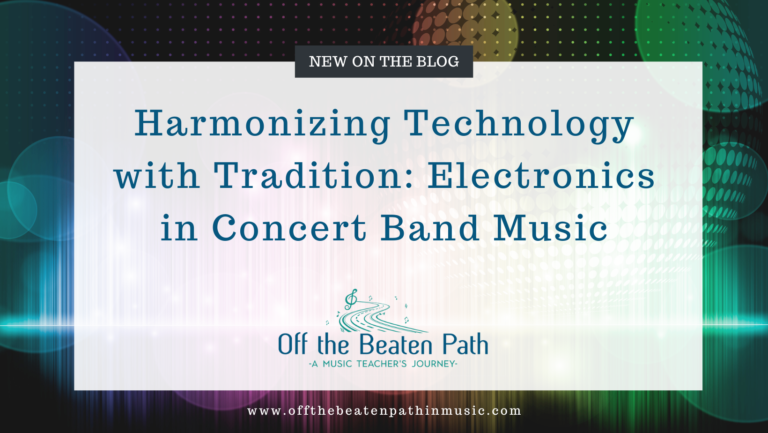Personalized Learning Tidbits
Last week I attended the Mid-Atlantic Conference on Personalized Learning (MACPL). As a member of the Personalized Learning Design Team in Arlington County, this was very exciting! Last year I wrote about my work with Personalized Learning in music a few times. While I haven’t written about it in a while, it’s still something I work to incorporate in my classes.

For those new to Personalized Learning, iNACOL defines it as:
“Tailoring learning for each student’s strengths, needs
and interests–including enabling student voice and choice in what, how, when and where they learn–to provide flexibility and supports to ensure mastery of the highest standards possible.”
The conference had a mix of content-specific and general sessions. None directly related to music or the arts, but many sessions contained good ideas for music educators. Here are some of my favorite tidbits:
Getting started
When getting started with Personalized Learning, think about the teacher as being like a personal trainer. Trainers first ask clients about their goals. Then, the trainer and client work together to create a fitness plan. As teachers, we should talk to students about their goals and work with them to devise a learning plan.
What’s fair?
Many presenters spoke about remembering that “fair” is getting what you need, it’s not about getting what everyone else has. When thinking about our music students, everyone has different needs. How can we best give each student what they need to be musical?

– Bryan Bown
Pace yourself
One useful tip had to do with planning Personalized Learning lessons or units. Don’t try to change everything at once! Carmen Fallone and Kaitlyn Richardson suggest creating and teaching one personalized unit first. Then, teach your next unit the same way you did the year before. Since that work is ready to go, take that time to plan your next personalized unit. It will be more manageable in the long run. For band and orchestra directors, this may mean trying a personalized approach with one ensemble, or even one concert piece to start.
Transfer of knowledge and skills
Students must be able to transfer what they know and learn into familiar and unfamiliar contexts. This hits home with music, especially performing ensembles. What good is it for students to learn three pieces for a concert if they can’t transfer the skills to be able to play other pieces both with the ensemble and alone? One of our goals should be to help students become self-directed, independent musicians.
Unlearning
Many parts of education today will first require unlearning for teachers and for parents. Just because something worked in the past does not mean it still works now. We may need to unlearn these habits to discover what is best for our students.
There is no one right way
Keynote speaker, Diana Laufenberg ended her talk with these words of wisdom:
“There is no one right way. There is no easy answer. This work is hard. …but we stand poised on the edge of creating personally meaningful spaces for students and learning…This learning is for the modern age. These are the schools we need. Game on.“

When you encounter resistance
Another keynote speaker, Jennie Magiera, had many wonderful things to say. One of my favorites had to with how we work with others. When someone is resistant to what you want them to do, do you ever stop to think about what they need? How many times have we tried to get someone to do something our way and never considered that person’s needs in the process? This idea I need to remember.

Start with Why
Always start by knowing why you are doing something. If the answer is, because that’s how you’ve always done it, it’s time to re-examine. Several presenters mentioned Simon Sinek and his well-known TED-Talk based on this idea. It’s important to know the why in everything we do, from lesson planning to classroom design, to make sure the needs of our students are always front and center.

Personalized Learning isn’t a specific thing you suddenly implement or even something you convert to one hundred percent. Rather, it’s a mindset to incorporate. It’s a way of thinking when you plan lessons. And it’s a way to view your classes and goals for students. Do we want students who can robotically mimic a piece of music or students who can make intelligent musical decisions on their own? Students who have perfected a select set of repertoire, or students who have the independent skills to study many musical pieces? I want my students to be musical. I want them to love music. And I want them to be lifelong musicians.
For Further Reading:
- Personalized Learning: Part 1
- Personalized Learning: Part 2
- Personalized Learning: Part 3, How it Works
- Personalized Learning – A Year in Review
Enjoy what you have just read? Please consider subscribing to my blog!




